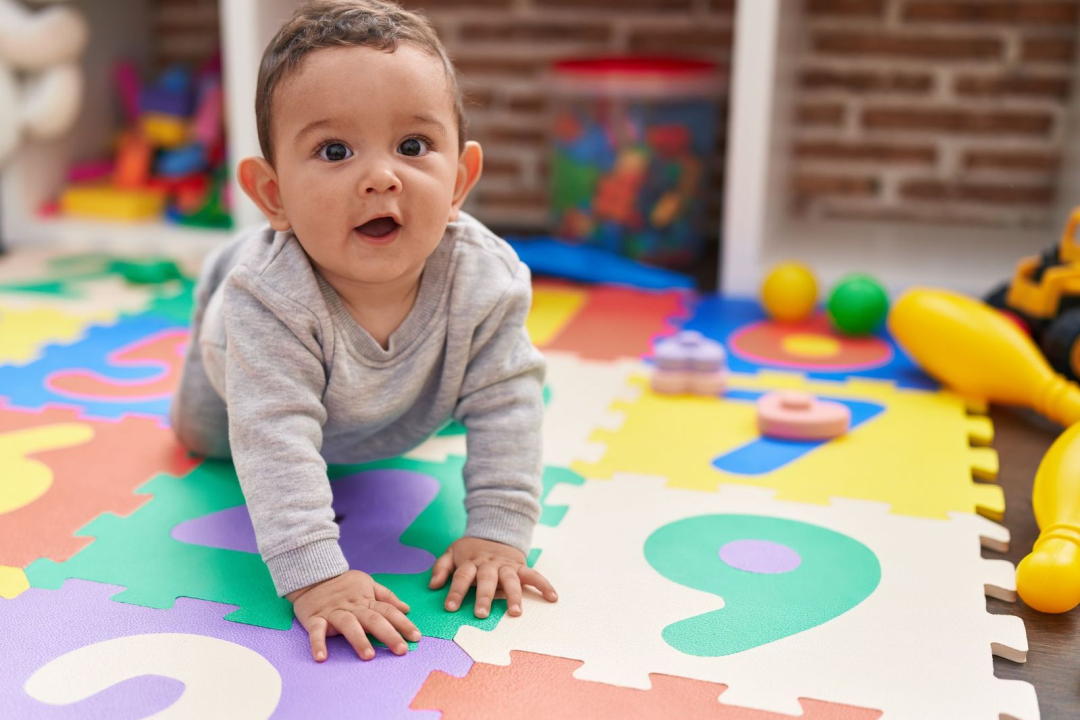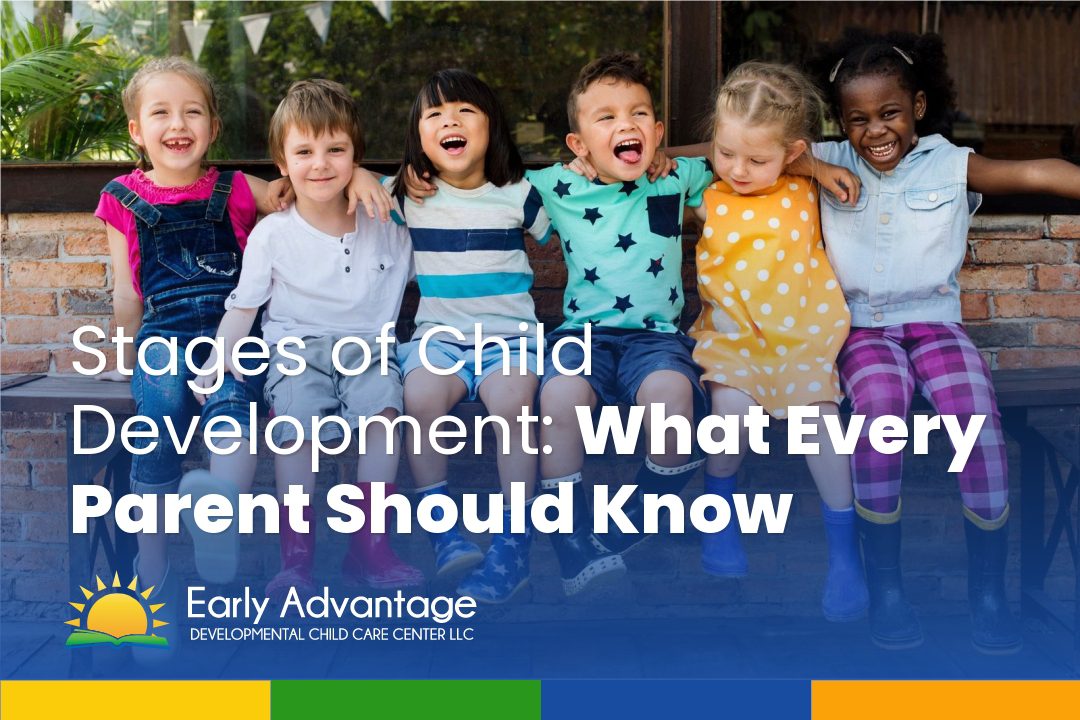Stages of Child Development: What Every Parent Should Know
Understanding the stages of child development is a vital aspect of parenting and caregiving. From infancy to adulthood, children go through remarkable transformations physically, cognitively, and emotionally.
Each stage brings unique milestones, challenges, and opportunities for growth. By familiarizing ourselves with these stages, we can provide the necessary support and guidance to nurture children’s development effectively. In this comprehensive guide, we will explore the different stages of child development, including infancy, early childhood, middle childhood, adolescence, and emerging adulthood. Join us on this enlightening journey as we delve into the remarkable progression of children’s lives and gain insights into their ever-evolving needs and potential

Infancy (0-2 years)
The journey of parenthood begins with the stage of infancy. From the moment a baby is born until they reach the age of two, they undergo rapid growth and development in various aspects of their lives. As a parent, understanding the unique characteristics and milestones of this stage can provide invaluable insights into your child’s needs and help foster their overall well-being. Let’s delve into the captivating world of infancy and explore the remarkable milestones that mark this beautiful phase.
Physical Development:
During infancy, your little one experiences incredible physical growth. From their first breath to taking those wobbly first steps, their bodies transform before your eyes. Infants gradually gain control over their muscles, enabling them to lift their heads, roll over, sit, and eventually crawl and walk. It’s a joyous sight to witness your baby’s motor skills developing as they explore the world around them.
Physical Milestones for Infancy
- Lifts head and turns it side to side by 3 months.
- Rolls over from front to back and vice versa by 6 months.
- Sits without support by 8-9 months.
- Crawls and pulls to stand by 12 months.
- Takes first steps independently between 12-18 months.
Cognitive Development:
Infancy is a time of immense cognitive growth as your baby’s brain rapidly develops. They are like little sponges, absorbing information from their surroundings. You’ll notice their curiosity shining through as they start to recognize familiar faces, grasp objects, and respond to sounds and voices. Simple games like peek-a-boo and stacking blocks become avenues for learning and discovering cause and effect.
Cognitive Milestones for Infancy
- Begins to recognize faces and familiar objects by 2-3 months.
- Reaches for and grasps objects by 4-6 months.
- Begins to imitate simple actions, like clapping hands, by 9-12 months.
- Understands and responds to simple instructions by 12-18 months.
- Engages in pretend play and simple problem-solving by 18-24 months.
Social-Emotional Development:
Building strong emotional bonds and social connections is a vital aspect of infant development. As a parent, your loving presence plays a pivotal role in nurturing your baby’s emotional well-being. Infants begin to form attachments and develop trust, primarily with their caregivers. Smiles, coos, and babbling are their early means of communication, as they delight in the interactions with their loved ones.
Social-Emotional Milestones for Infancy
- Smiles responsively and enjoys social interactions by 2-3 months.
- Begins to babble and imitate sounds by 6-9 months.
- Shows separation anxiety when separated from primary caregivers by 9-12 months.
- Understands and responds to their name and simple verbal cues by 12-18 months.
- Demonstrates empathy and engages in simple turn-taking during play by 18-24 months.
The infancy stage is a time of astonishing growth and discovery. Each milestone achieved represents a small victory for your child and fills your heart with immense pride. By understanding the physical, cognitive, and social-emotional milestones of infancy, you can provide the nurturing environment necessary for your baby’s healthy development. Cherish these precious moments, and remember, you are their guiding light on this incredible journey of growth.

Early Childhood (2-6 years)
Welcome to the enchanting world of early childhood! This is a phase filled with wonder, exploration, and boundless curiosity. From the age of two to six, children undergo significant development across various domains, paving the way for their future growth. As a parent, understanding the remarkable milestones and characteristics of early childhood can empower you to support your child’s learning, emotional well-being, and social interactions. Let’s embark on this exciting journey and uncover the transformative stages of early childhood.
Physical Development:
In the realm of physical development, early childhood witnesses remarkable progress as children gain control over their bodies and refine their motor skills. From the time they take their first independent steps to the mastery of complex movements like running, jumping, and climbing, their physical abilities expand exponentially. Engaging in active play and providing opportunities for movement are essential for fostering their physical development.
Physical Milestones for Early Childhood
- Walks and runs with coordination by 2-3 years.
- Climbs stairs using alternate feet by 3-4 years.
- Pedals a tricycle or bicycle with training wheels by 4-5 years.
- Balances on one foot and hops with ease by 5-6 years.
- Demonstrates improved hand-eye coordination and fine motor skills, such as cutting with scissors or tying shoelaces.
Cognitive Development:
Early childhood is a period of significant cognitive growth as children’s minds expand and their ability to think and reason develops. They become more curious, asking countless questions and seeking answers. During this stage, their language skills flourish, allowing them to engage in meaningful conversations and express their thoughts and emotions more effectively. Their imagination blossoms, leading to elaborate pretend play and creative thinking.
Cognitive Developmental Milestones for Early Childhood
- Uses sentences with 3-4 words and understands simple instructions by 2-3 years.
- Engages in imaginative play and creates stories with characters and plotlines by 3-4 years.
- Recognizes and names colors, shapes, and numbers by 4-5 years.
- Participates in more complex problem-solving activities and shows curiosity about the world around them by 5-6 years.
- Demonstrates emerging literacy skills, such as recognizing letters and showing interest in books and reading.
Social-Emotional Development:
Early childhood lays the foundation for social interactions and emotional growth. Children develop a sense of self and begin to understand their emotions and those of others. They learn to navigate friendships, share toys, and engage in cooperative play. This stage is crucial for fostering empathy, kindness, and resilience in their relationships with peers and adults. Creating a supportive and nurturing environment helps them develop a positive self-image and strong social skills.
Social-Emotional Milestones for Early Childhood
- Shows empathy and understanding of others’ feelings by 2-3 years.
- Engages in cooperative play and takes turns during group activities by 3-4 years.
- Begins to develop friendships and demonstrates sharing and taking responsibility for their actions by 4-5 years.
- Shows increased independence, confidence, and self-regulation skills by 5-6 years.
- Understands basic social norms and follows simple rules.
Early childhood is a magical time filled with endless possibilities for growth and exploration. By understanding the physical, cognitive, and social-emotional milestones of this stage, you can provide the necessary support and encouragement for your child’s development.

Middle Childhood (6-12 years)
Welcome to the remarkable stage of middle childhood! This is an exciting period filled with growth, learning, and self-discovery. School age children undergo significant cognitive, physical, and social-emotional development that shapes their personalities and abilities. As a parent, understanding the unique milestones and characteristics of middle childhood can empower you to support your child’s academic success, social relationships, and overall well-being. Let’s dive into this transformative stage and explore the incredible journey of middle childhood.
Physical Development:
Middle childhood witnesses a continuation of physical growth, as children’s bodies become stronger and more coordinated. They develop improved motor skills, allowing them to engage in sports, play complex games, and participate in physical activities with greater proficiency. Encouraging regular exercise, balanced nutrition, and healthy habits lays the foundation for lifelong well-being and continued child development.
Developmental Milestones Physical Devlopment in Middle Childhood
- Shows improved coordination and balance in activities like bike riding and team sports.
- Develops fine motor skills for activities such as writing, drawing, and playing musical instruments.
- Experiences growth spurts and changes in body proportions.
- Demonstrates increased strength and endurance for physical activities and games.
- Begins to show signs of puberty toward the end of middle childhood, such as the onset of secondary sexual characteristics.
Cognitive Development:
Middle childhood marks a period of significant cognitive development, as children’s thinking becomes more logical, analytical, and abstract. They develop problem-solving skills, critical thinking abilities, and a growing capacity for independent thought. Their academic abilities expand, allowing them to grasp complex concepts, engage in higher-level reading and writing, and explore various subjects with enthusiasm.
Developmental Milestones for Middle Childhood
- Shows improved memory and recall abilities.
- Develops logical reasoning skills and the ability to solve multi-step problems.
- Demonstrates an expanding vocabulary and enhanced language comprehension.
- Engages in independent reading and writing, expressing thoughts and ideas more coherently.
- Shows an interest in specific subjects or areas of knowledge, developing areas of expertise.
Social-Emotional Development:
Middle childhood is a significant time for social and emotional growth. Children develop a stronger sense of self, begin to understand their unique strengths and weaknesses, and form more complex relationships with peers and adults. They navigate the challenges of social interactions, build friendships, and start to develop a sense of empathy, compassion, and respect for others.
Developmental Milestones for Middle Childhood Social-Emotional
- Shows increased independence and takes on responsibilities at home and school.
- Develops a sense of empathy and understanding of others’ perspectives.
- Forms friendships based on shared interests and mutual trust.
- Begins to develop a sense of personal identity and self-esteem.
- Demonstrates problem-solving skills in conflicts and seeks adult guidance when needed.
Middle childhood is an incredible stage filled with growth, exploration, and self-discovery. By understanding the physical, cognitive, and social-emotional milestones of this period, you can provide the support and guidance necessary for your child’s development. Encourage their physical activities, foster their love for learning, and nurture their social relationships. Middle childhood is a time of immense possibilities, and with your love and guidance, your child will thrive.
Remember to consult reliable sources as your school age child goes through these stages of child development, engage with teachers and educational professionals, and maintain open communication with your child. Embrace this transformative journey and celebrate the achievements and joys of middle childhood, the strong parent child bonds you build here will pay dividends later on.

Adolescence (12-18 years)
Welcome to the dynamic and transformative stage of adolescence! This period marks a significant milestone in your child’s development as they transition from childhood to adulthood. Adolescence is a time of immense change, both physically and emotionally, as teenagers navigate their identities, relationships, and future aspirations. As a parent, understanding the unique characteristics and challenges of adolescence can empower you to support your teenager’s growth and help them navigate this exciting yet sometimes tumultuous stage. Let’s explore the remarkable journey of adolescence together.
Physical Development:
Adolescence is accompanied by dramatic physical changes as teenagers go through puberty. They experience rapid growth spurts, with significant changes in height, weight, and body proportions. Secondary sexual characteristics begin to develop, marking the onset of reproductive maturity. It’s important to provide guidance and support during this time, addressing any concerns or questions your teenager may have about their changing bodies.
Developmental Milestones:
- Rapid growth spurts, with significant changes in height, weight, and body proportions.
- Development of secondary sexual characteristics, such as breast development in girls and facial hair growth in boys.
- Maturation of reproductive organs and the onset of menstruation in girls and sperm production in boys.
- Increased muscle development and strength.
- Changes in body shape and distribution of body fat.
- Fine motor skills become more refined, enabling improved coordination and dexterity.
- Continued development of gross motor skills, allowing for greater agility and physical performance.
- Development of physical stamina and endurance.
- Improved hand-eye coordination and motor skills required for sports and complex physical activities.
- Dental and skeletal growth, including the eruption of wisdom teeth and continued bone development.
Cognitive Development:
Cognitive development continues during adolescence, with teenagers refining their thinking abilities and becoming more capable of abstract and hypothetical reasoning. They develop their own beliefs, opinions, and values, and may engage in more critical analysis of the world around them. Adolescents often exhibit an increased desire for independence, as well as an eagerness to explore their own identity and future aspirations.
Cognitive Milestones
Development of abstract thinking and the ability to reason logically.
- Increased ability to think hypothetically and engage in complex problem-solving.
- Capacity for introspection and self-reflection, leading to a deeper understanding of one’s own thoughts, emotions, and identity.
- Advancement in critical thinking skills, including the ability to analyze and evaluate information from multiple perspectives.
- Heightened ability to plan, set goals, and think about long-term consequences.
- Expanded knowledge base and the ability to grasp more advanced academic concepts.
- Development of metacognitive skills, including self-monitoring and self-regulation of learning strategies.
- Improved executive functions, such as attention, working memory, and cognitive flexibility.
- Increased ability to understand and appreciate abstract concepts in various disciplines, including mathematics, sciences, and humanities.
- Growth in intellectual curiosity and a desire to explore new ideas and engage in intellectual discussions.
Social-Emotional Development:
Social and emotional development takes center stage during adolescence, as teenagers navigate the complexities of relationships and establish their own sense of self. They seek to belong and form strong connections with peers, while also developing a greater understanding of their own emotions and those of others. Adolescents may experience heightened sensitivity and face various challenges, such as managing peer pressure and coping with academic stress.
Social-Emotional Milestones for Adolescence
Adolescence is an exhilarating and transformative journey filled with growth, self-discovery, and new experiences. As a parent, you play a crucial role in supporting your teenager during this stage, providing a safe and nurturing environment for them to explore their identities and make informed choices. Remember to maintain open communication, foster a non-judgmental atmosphere, and encourage healthy decision-making.

